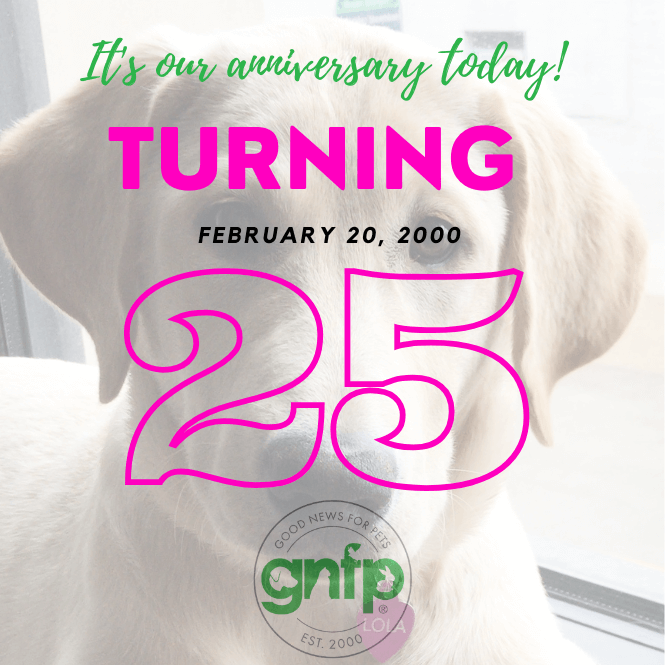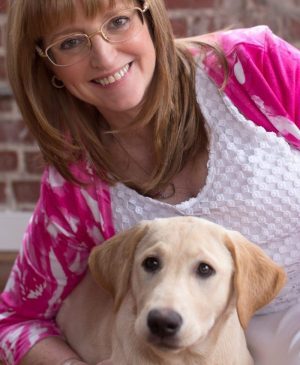This post may contain affiliate links. We may earn money or products from the companies mentioned in this post.
It may not seem like it, but your puppy’s first year will fly by, and that tiny pup will grow into an adult dog in the blink of an eye.
Transitioning from three to two meals a day is one of the biggest milestones in your pup’s life and has a huge impact on their overall health.
Knowing when to switch a puppy to two meals a day will put your pup on the right track to becoming a happy and healthy adult.
When my dog was still a puppy, I heard different advice about how often and how much he should eat. Some said once a day, others advised twice a day.
I was even told to keep the bowl full at all times and let my pup eat at will (we did this with our first puppy, Linus because he lied to graze).
To be honest, none of this made any sense, and I wasn’t willing to risk my pup’s health and well-being based on other people’s opinions.
I’ve come to find that puppies are a lot like human babies: They need several smaller meals throughout the day and do best on a strict schedule.
While all dogs are individuals, all puppies should start at four meals a day and gradually transition to two meals a day during their first year of life.
In this article, I’ll tell you why a regular feeding schedule is so important and when to feed a puppy two meals a day. Keep on reading to learn everything you should know about your puppy’s nutritional needs.
QUICK RECOMMENDATION: Our guide dog puppies are currently eating Purina Pro Plan Puppy Large Breed Formula. Remember our guide pups are mostly larger breed dogs – Labs, Goldens, and German Shepherds. This dog food may not be best for your pup.
When Should A Puppy Go From Three Meals To Two Meals?
Bringing a new puppy home is a huge responsibility! Not only do you need to survive the puppy’s first night at home, but you also have to create and stick to a regular feeding schedule from the get-go.
A good feeding schedule and high-quality food are essential for your puppy’s growth and development and have a huge influence on how healthy your pooch will be when they grow up.
Free feeding and low-quality puppy food put your puppy at risk of becoming overweight and developing serious health problems such as diabetes and musculoskeletal conditions.
Therefore, it’s vital that you know what the best feeding schedule is for your puppy, based on their life stage.
All puppies go through the same developmental stages during their first year of life, but some pups can transition to two meals a day sooner than others.
This largely depends on your pup’s breed and size. Smaller breeds need less time to develop and grow than larger and giant dogs.
Consequently, a small breed dog such as a Chihuahua may start eating two meals a day way sooner than a giant Great Dane puppy.
Generally speaking, you should switch a puppy to two meals a day when they hit the six-month mark. This is a general rule of thumb.
As you know, all dogs are individuals, and you should always talk with your breeder or veterinarian before changing your puppy’s food or feeding schedule.
With that said, I’ll give you a general timeline for what your puppy’s feeding schedule should look like during the first year of its life.
QUICK RECOMMENDATION: We’ve found the best bowls to use with our puppies are simple no-tip stainless steel dog bowls. We’ve had these exact same bowls since our first puppy Linus who we rescued from the shelter back in January 2005!
From Six To 12 Weeks
Very young puppies, like human babies, need to eat several times throughout the day to stay energized and grow properly. Most puppies are already weaned from their mothers by the age of eight weeks when they are sent to their new owners and forever homes.
Whether you purchased or adopted your puppy, the breeder or the staff from the shelter should have told you the brand of puppy food your pup is used to eating.
If there is no dire need to change your puppy’s food to another formula, you should continue feeding the same food after you bring the pup home.
At this stage, puppies grow fast and need a lot of food and frequent meals to grow and develop properly. You should feed four equally spaced meals and make it a point that meals are always given at the same times of the day.
Sticking to a regular feeding schedule will help you immensely in potty training your puppy, since they need to eliminate 10 to 15 minutes after eating a meal.
By keeping a strict feeding schedule, you can predict when your puppy will need to go outside and give them an opportunity to relieve themselves in the designated potty area.
From six to 12 weeks of age, you should be feeding a complete and balanced puppy food that is specially formulated to meet the nutritional needs of a developing puppy.
When eating commercial puppy food, puppies can transition to unmoistened, dry puppy food by the age of nine to 10 weeks for large breed pups and by 12 to 13 weeks for small breeds.
If you are considering a homemade or raw diet, talk with your vet or canine nutritionist first. Preparing your pup’s food takes a lot of time and planning to get it right, and your pooch may be better off eating commercial puppy food.
QUICK RECOMMENDATION: If you are considering a different type of food for your puppy you might want to consider fresh dog food. Our current favorite is The Farmer’s Dog.
From Three To Six Months
At the three-month mark, you should consider cutting your puppy’s meals from four to three meals a day. Ideally, aim for feeding your puppy equally spaced breakfast, lunch, and dinner at the same times every day.
While your growing puppy will be eating significantly larger meals than when you first brought them home, it will still need high-calorie puppy food.
Most dogs start to lose their trademark chubby puppy appearance when they are around 12 weeks old. This is one of the signs you should look for when decreasing your pup’s feedings from four to three meals a day.
If your pup still has a potbelly and looks chubby at this stage, continue feeding four meals until its body starts to lose its puppy pudge.
And if you think that your pup is too chubby or, by contrast, too lanky, schedule an appointment with your vet and have your pooch examined. The solution may be as simple as tweaking your pup’s portion sizes and feeding more or less food for each meal.
From Six To 12 Months
When they reach six months of age, puppies enter an adolescent stage, and their nutritional needs change. So, if you were wondering when you should switch your puppy to two meals a day, now is the right time!
By the time puppies reach six months of age, they stop growing and developing at a rapid pace, and they no longer need as much food.
However, most will continue eating puppy food. Still, you should talk to your vet and see what the best food would be for your pup based on their individual nutritional needs.
Bear in mind, that most veterinarians recommend spaying and neutering puppies at this age (although we tend to wait longer based on this recent study for spaying and neutering), since this is the time most males become sexually mature.
If you decide to spay or neuter your pup, know that the procedure affects your dog’s nutritional needs.
Desexed puppies and dogs have lower energy requirements than their intact counterparts and need a different type of food. Consult your vet about switching your pooch from puppy food to adult maintenance formula.
Feeding a nutrient- and calorie-dense puppy food to a desexed dog can lead to obesity, so don’t wait long to transition your pooch to a new food.
You should also know that most smaller breeds can make a switch from three to two meals a day when they are around seven or nine months old.
Small dogs need less time to grow up and reach adulthood than larger breeds and consequently have different nutritional needs. If you have a toy or small-breed dog, feed them with small-breed puppy food.
Small-breed dog foods generally have more calories and are specially formulated to meet the higher energy needs of a small dog.
You should keep this in mind when picking out food for your pup since feeding an inappropriate diet can have an adverse effect on your pup’s growth, energy levels, and overall health.
Large and giant breed puppies, on the other hand, can continue eating three meals a day until they are 12 and in some cases even 14 months old.
Larger dogs need more time to fully grow and reach adulthood and have completely different nutritional needs than their smaller counterparts.
When it comes to large breeds, getting the nutrition right is of utmost importance. Overfeeding a large breed puppy can cause rapid growth, which can lead to serious health problems.
Eating too many calories can cause musculoskeletal disorders in large and giant breed puppies, so pay close attention to how much food you are feeding your pup.
Another important consideration when it comes to large-breed puppies is the calcium-phosphorus ratio. An ideal calcium-phosphorus ratio for large and giant breeds is 1.2:1 and should ideally come from your pup’s diet.
Large puppies that are eating a complete and balanced food that contains recommended amounts of calcium shouldn’t take any calcium supplements.
There are a lot of things that can go wrong if you aren’t sticking to a regular feeding schedule or feeding complete and balanced food to your large breed puppy.
When it comes to bigger dogs, it’s better to err on the side of caution and continue feeding puppy food three times a day rather than switching to a large breed adult dog food too soon.
Remember, giant breeds such as the Great Dane may take two years to reach adulthood and their full size. Switching your pup to adult formula or cutting their meals too soon can deprive your pooch of essential nutrients and jeopardize their health.
On the other hand, feeding a puppy formula for too long isn’t a good option since it can lead to obesity and joint problems.
When it comes to your puppy’s diet and nutrition, you should have your vet involved every step of the way.
Knowing when to switch a puppy to two meals a day gives you enough time to schedule an exam with your vet and discuss your pup’s mealtimes and feeding schedule before making any changes.
Even though most puppies do well following these feeding guidelines and meal schedules, know that every dog is an individual. This means that your pup may need a specific feeding schedule and meal plan that will cater to their unique dietary needs.
Don’t hesitate to talk with your vet or your breeder whenever you have some questions or doubts. In the end, it’s their job to help you raise a happy and healthy puppy.
QUICK RECOMMENDATION: We feed most of our puppies dry dog food sometimes mixed with fresh dog food. Over the years we’ve found the easiest way is to use an airtight storage container like the Iris Pet Food Container.
FAQs About When To Switch Puppies To Two Meals A Day
When should I switch my puppy to two meals a day?
The best time to switch your puppy from three to two meals a day is when they are between six and 12 months old. Keep in mind that most toy and small breed dogs can make the switch to two meals a day when they are between seven and nine months old.
Large and giant breeds, on the other hand, can continue eating three meals a day until they are between 12 and 14 months old.
There are many factors that affect your dog’s nutritional needs and the number of meals they should have during the day.
Spayed and neutered puppies, for example, are less energetic than their intact counterparts and therefore need less nutrient-dense food and fewer meals.
Generally, you can transition a spayed or neutered puppy to adult maintenance food, to lower their calorie intake and prevent obesity.
How many times a day should I feed a two-month-old puppy?
A two-month-old puppy should be fed four small meals a day spread evenly throughout the day and always at the same times.
An eight-week-old puppy will still only eat canned puppy food, which means that you will need to feed larger amounts to account for your pup’s daily nutritional needs.
At this time, you may also want to try adding a few bits of dry kibble into your pup’s wet food to start getting them used to the feel and texture of kibble.
Since your pup should transition fully to dry puppy food by the age of 10 weeks, now is the perfect time to start introducing them to it.
Even when you start feeding kibble, your puppy will still need to have four equally spaced meals a day until they reach three months.
What time should a puppy have their last meal of the day?
Ideally, your puppy’s last meal for the day should be around 5 P.M., followed by a potty break and a playing session. Feeding your pup around this time will give them enough time to properly digest the entire meal and eliminate one last time before going to bed.
Wait two or three hours to take your puppy for a final walk for the day, making sure they have plenty of time to empty their bowel and bladder completely before heading back home.
Making sure that you stick to a regular feeding and potty schedule is the best way to housetrain and keep your pup energized throughout the day.
Should dogs have two meals a day?
Most puppies can switch to two meals a day when they are between six and 12 months old and should continue eating that way for the rest of their lives.
But, while most dogs do well on a two-meal-a-day schedule, adding a third meal can also be a good option.
Dogs that have digestive issues may have less trouble digesting smaller meals and do better when eating breakfast, lunch, and dinner.
Either way, you choose, make sure the meals are no more than 12 hours apart since your dog’s stomach can become too acidic leading to vomiting and nausea.
Is it cruel to feed a dog only once a day?
As long as you are feeding your dog the appropriate amount of food for their age, size, and activity level, feeding one meal a day isn’t cruel.
However, feeding an adult dog one meal a day for a long time can lead to some serious health problems such as bloat and hyperglycemia.
It’s far healthier for your dog to eat at least two smaller meals a day. Having breakfast and dinner will also help keep your pooch energized throughout the day and support proper digestion and bowel movements.
When I first started raising guide dog puppies back in 2006 we transitioned our puppies to once-a-day feedings at about 15 months old.
I was not a fan of feeding our dogs only once a day and apparently, the school decided it wasn’t a good idea either. By the time I raised my second puppy, they went back to twice-a-day feeding for our older pups.
Dog Food Recommendations
We are not veterinarians but over the years we’ve fed our dogs many different types of food. Here are a few we’ve given our dogs that you might want to consider feeding your pups.
Guide Dog Puppies
Over the years the guide dog program has changed the food we feed our puppies in training. Here’s a look at the foods we’ve fed our guide pups:
- Canidae – when we brought home Stetson he started on Canidae All Life Stages.
- Natural Balance – By the time we raised Derby we were feeding Natural Balance.
- Purina Pro Plan – Our current puppy, Anna eats Purina Pro Plan for Puppies.
Our Puppies
Over the years we’ve fed our new pups all different kinds of food. It will vary depending on what breeders, shelters, and rescues recommend and use with their puppies. Here’s a list of the foods we’ve fed our puppies that we like:
- Wellness Core – We start most of our with Wellness Core puppy then move to the adult version of the food.
- Instinct – When we brought home a service puppy, Archer his breeder was feeding Nature’s Variety, Instinct Original so we kept him on that food.
- Fromm Gold – When we brought home Elsa she was eating Fromm Gold for puppies we slowly transitioned her over to Wellness Core puppy formula.
- Orijen – From time to time we’ll move our older dogs over to Orijen to change up their diet.
- Acana – Just like Orijen we’ll move our dogs over to Acana from time to time.
Dehydrated Dog Food
- Honest Kitchen – Linus ate Honest Kitchen from time to time and we’d also use it as a topper with his dry food.
- Sojos – We sampled and used Sojos for a short period of time but like The Farmer’s Dog, it’s on the expensive side.
Fresh Dog Food
- The Farmer’s Dog – We love The Farmer’s Dog as an alternative food but as mentioned earlier it’s on the expensive side.
Hopefully, you can find food your dog loves. These are some of our favorites and worth checking out if you haven’t found something for your dog or puppy.
Conclusion
Knowing when a puppy should go from three meals to two meals a day is important for your pup’s overall health and development.
Making sure that your pup is getting all the right nutrients they need based on their life stage will ensure that they grow into a happy, healthy, and strong adult dog.
When it comes to a puppy’s feeding schedule here’s what you need to remember:
- From six to 12 weeks of age, feed four meals a day
- From three months to six months, feed three meals a day
- From six months to 12 months, switch your puppy to two meals a day
In the end, while most puppies can start having two meals a day when they are between six and 12 months old, ask your breeder or rescue center for their guidelines on feeding your puppy.
Also, talk to your vet and see if cutting your pup’s meals is the right thing to do.
That all being said these are general guidelines that you can apply to most puppies. However, as mentioned earlier every puppy will have his own individual needs based on size, breed, etc.
We’ve raised dozens of puppies and every breeder will have their own set of guidelines that are important to follow. After all your breeder will know her puppies better than anyone.
When we brought home our 8-week-old guide dog puppy, Stetson the school recommended soaking his kibble (Canidae All Life Stages) in warm water for 10 minutes and feeding him three times a day.
When he reached 4 months old they asked us to transition him to eating twice a day.
On the other hand, when we adopted a Labrador puppy from our local breeder their recommendation was to feed FROMM Gold three times a day without soaking then transitioning to twice a day when she was 6 months old.
I’ll say it again…every puppy is different.
How about you?
How old is your puppy and how often do you feed him/her?
Tell us about your experiences in the comment section below.
Save To Pinterest
UPDATE: This post was originally published on March 25, 2022. We periodically update blog posts with new experiences and information to keep them as relevant as possible.
Top Picks For Our Puppies
- BEST DOG CHEW
We Like: Beef Collagen Sticks – All of our pups love to bite, nip, and chew. We love using Collagen Sticks to help divert these unwanted behaviors.
- BEST PUPPY TOY
We Like: Calmeroos Puppy Toy w/ Heartbeat and Heat Packs – Perfect for new puppies. Helps ease anxiety in their new home.
- BEST DOG TREATS
We Like: Crazy Dog Train-Me Treats – We use these as our high-value treats for our guide dog puppies.
- BEST FRESH DOG FOOD
We Like: The Farmer’s Dog – A couple months ago we started feeding Raven fresh dog food and she loves it! Get 50% off your first order of The Farmer’s Dog.
Check out more of our favorites on our New Puppy Checklist.


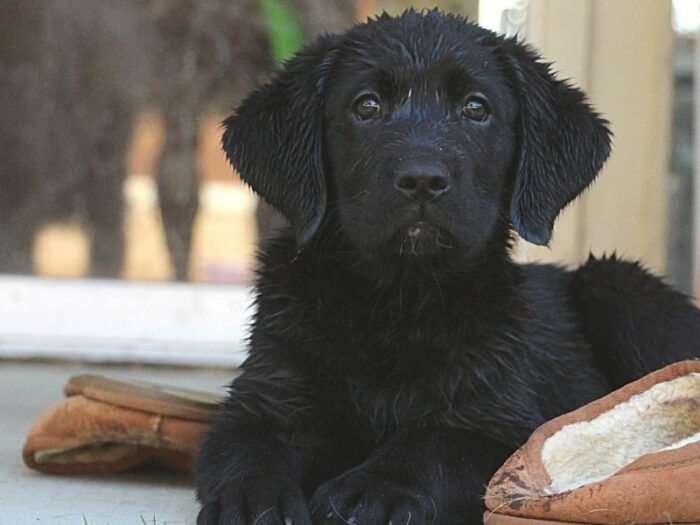
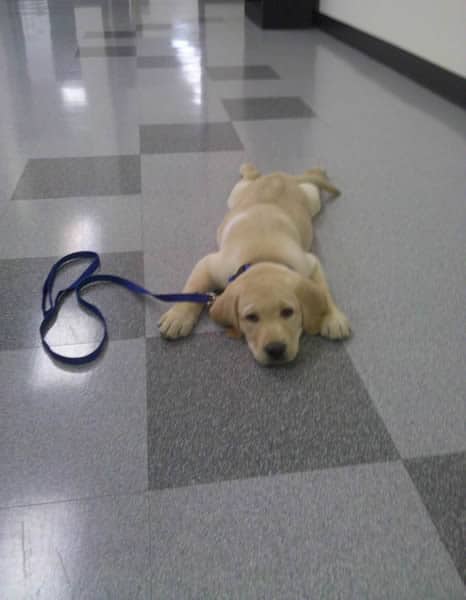
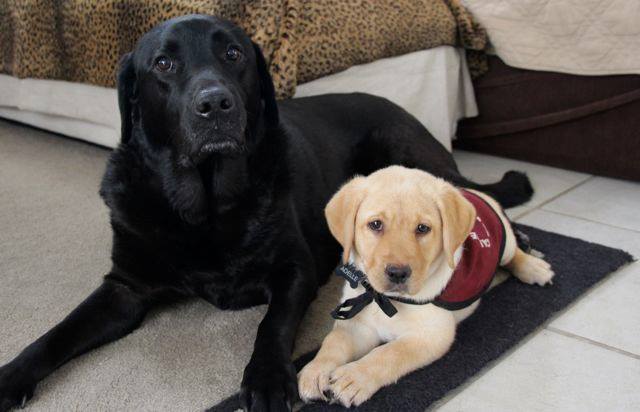
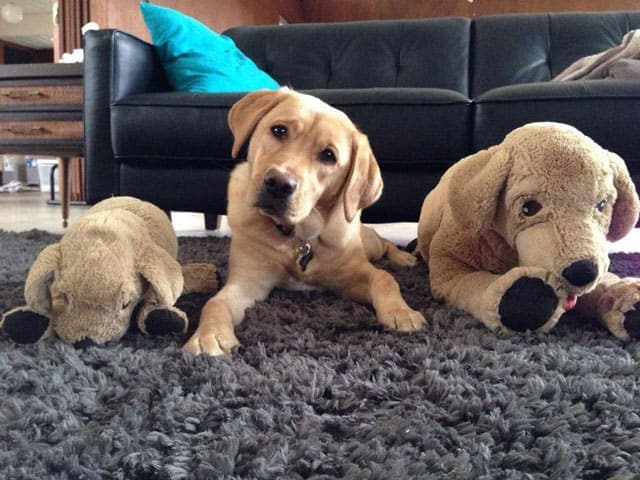












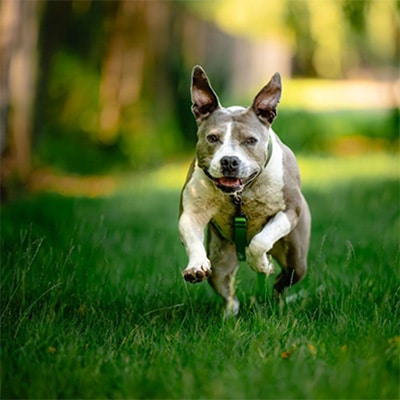
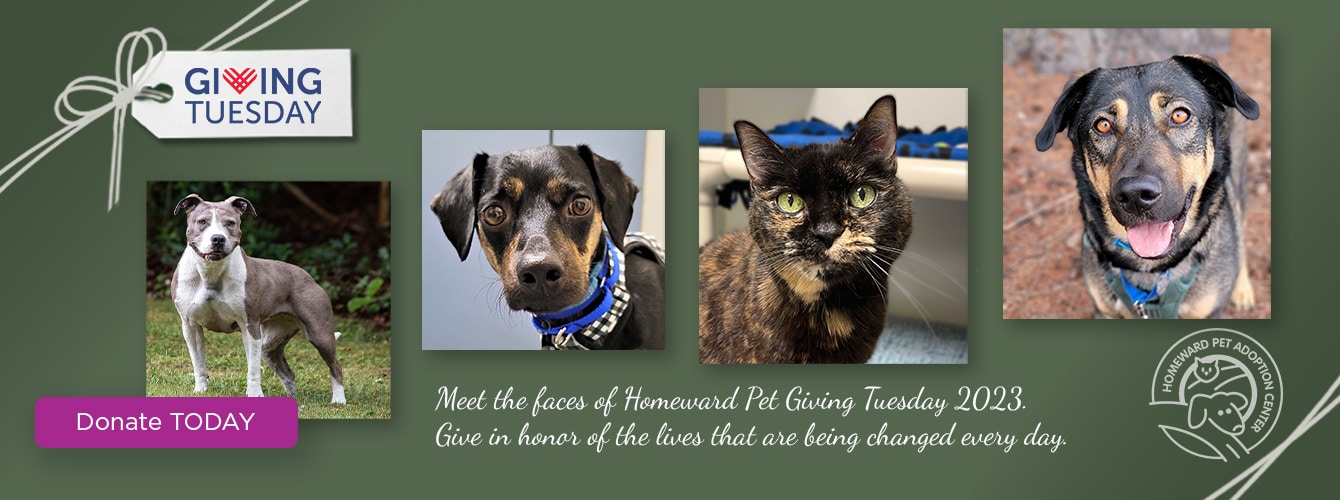
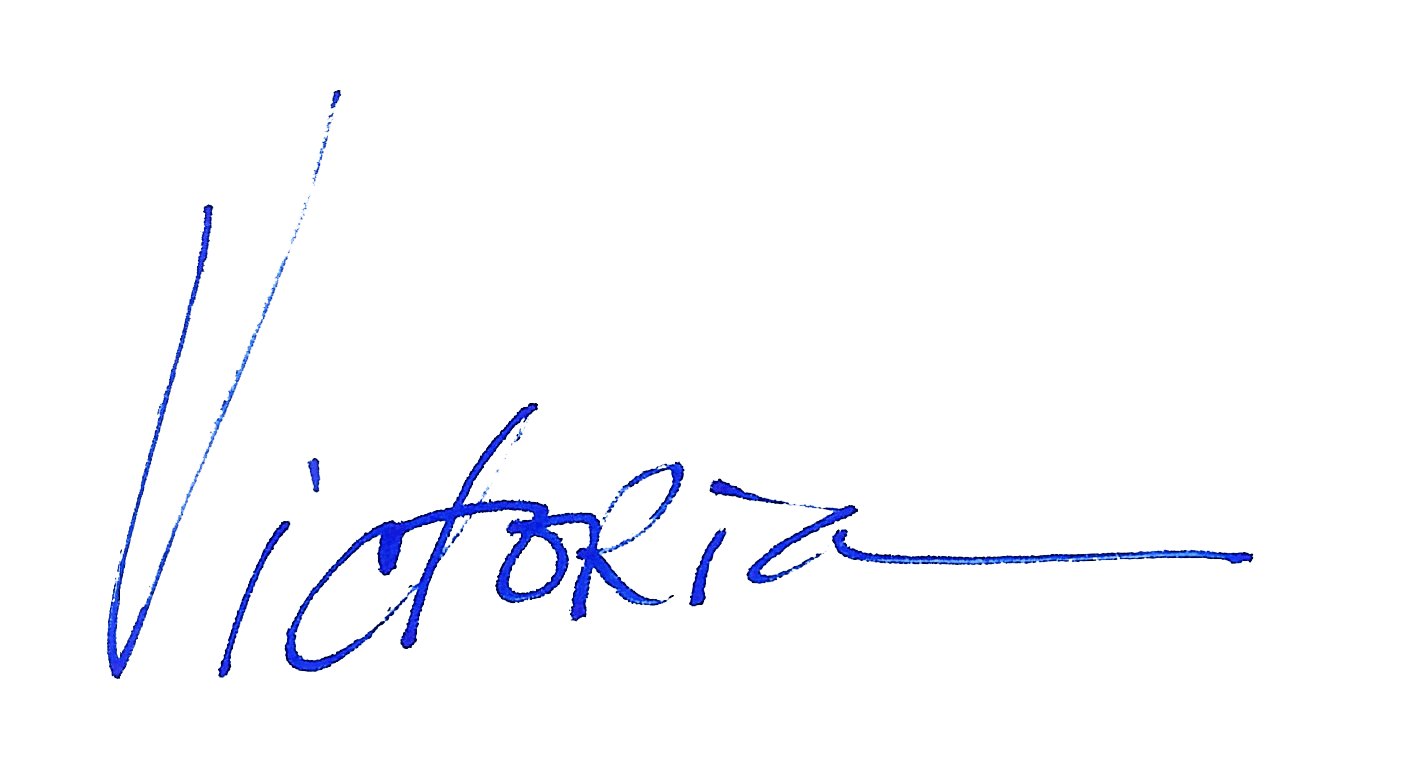
 Transforming Fear to Trust: Bowie’s Journey and why your support matters
Transforming Fear to Trust: Bowie’s Journey and why your support matters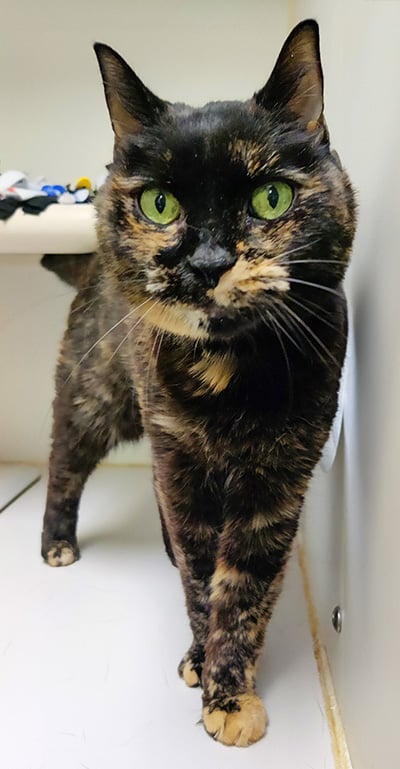 Meet Sophie: Resilient, Loving, and the power of second chances
Meet Sophie: Resilient, Loving, and the power of second chances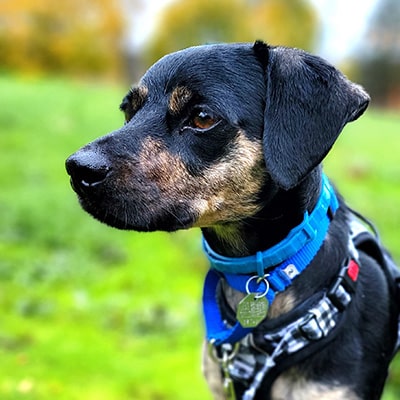 Finding Joy in Shelter Pets: Scarlett’s Journey and how you can help
Finding Joy in Shelter Pets: Scarlett’s Journey and how you can help Introducing the stars of this year’s Giving Tuesday Stories
Introducing the stars of this year’s Giving Tuesday Stories










